
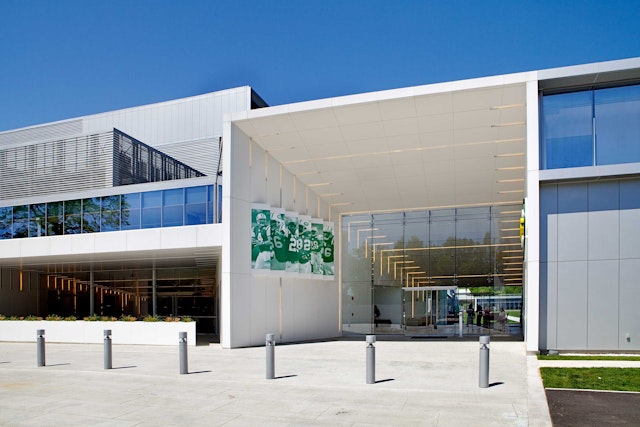

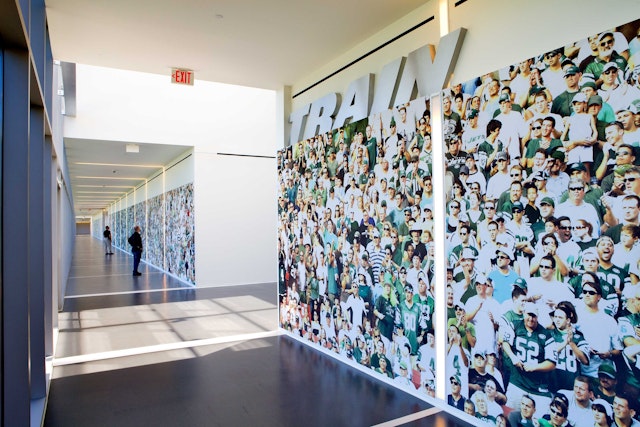
The graphics have become part of the team DNA, and at the training center they are integrated into the architecture to extend the team’s identity into the space.
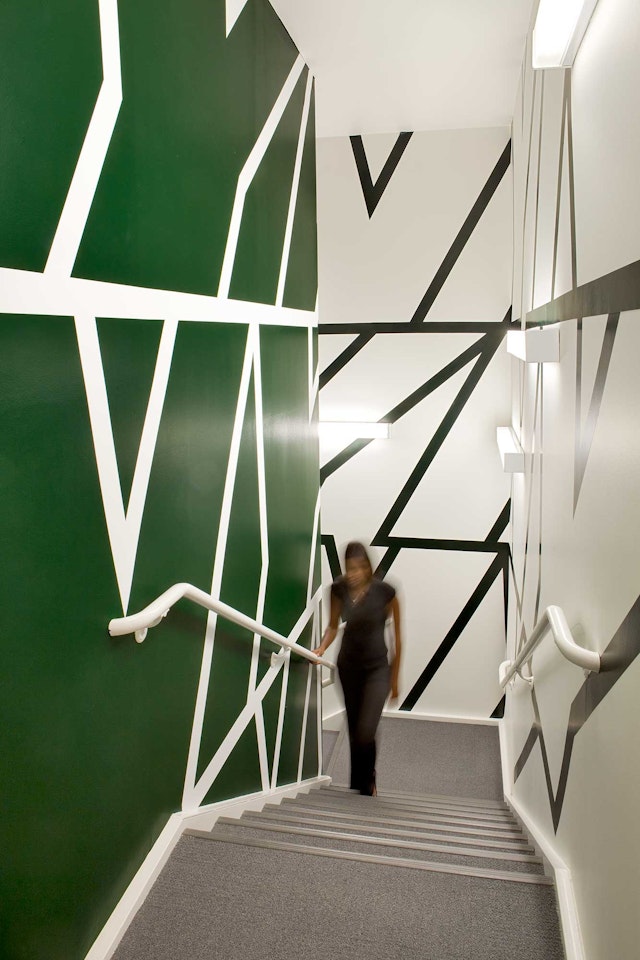
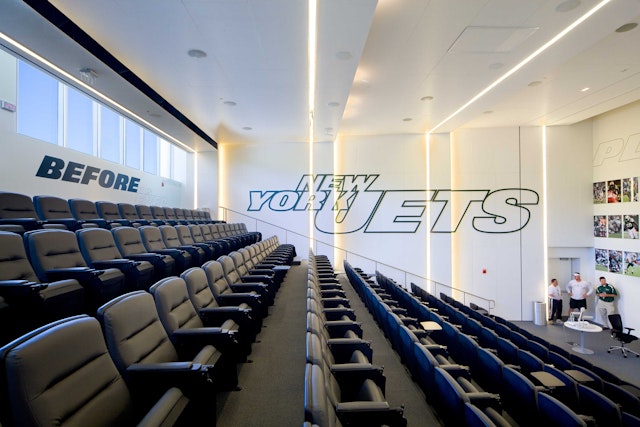
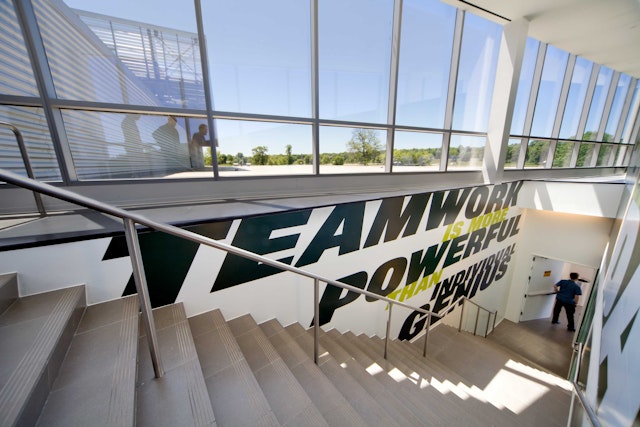
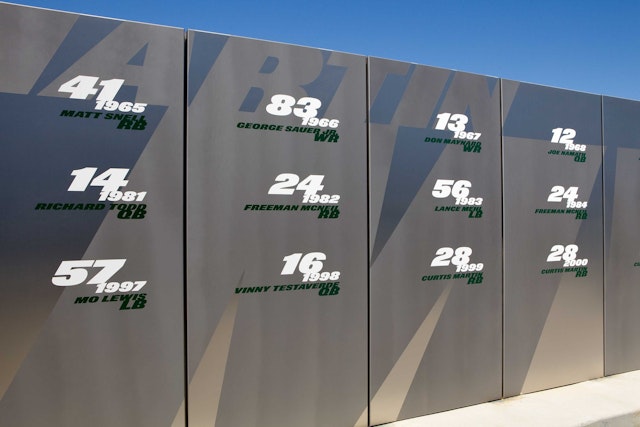
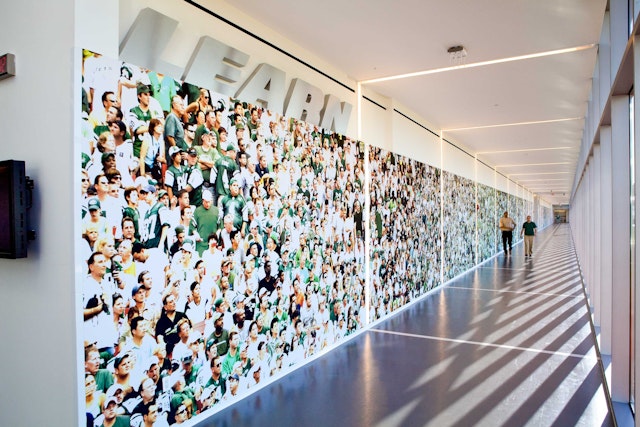
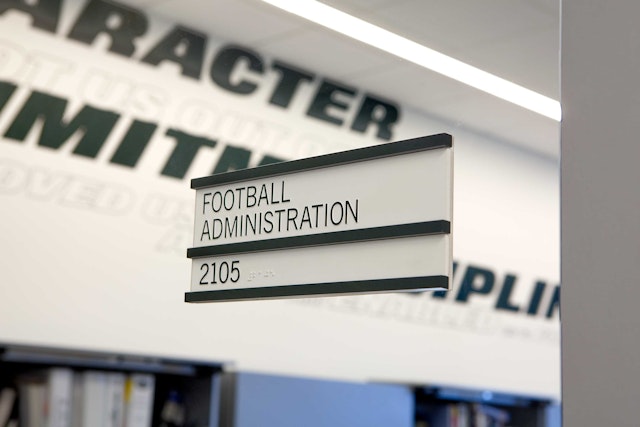

In 2010, the New York Jets' newest winning member was its training center. The building was designed by Skidmore, Owings & Merrill's Roger Duffy, and everything about the training center is focused on improving the performance of the players and team. This extends to the building’s bold and aggressive graphics designed by Pentagram. Using the identity we previously developed for the Jets, the graphics have been integrated into the architecture to create a holistic environment that fosters a sense of pride, focus and competition for the team and carries the spirit of the Jets onto the training field.
Officially called the Atlantic Health Jets Training Center, the camp is the most modern training facility in the NFL and doubles as the corporate headquarters for the team. The 217,000-square foot, 27-acre complex in Florham Park, New Jersey, houses the practice facilities and business operations of the Jets, its players, coaches, corporate officers and medical team, and is also used for visits with sponsors, press and fans. The Jets previously trained at Hofstra University and had its corporate offices in Manhattan; the new center gives the team its own home and unites players and corporate staff under one roof, working together to win.
Architecturally the Jets Training Center has a transparency that allows it to be an extension of the playing field or game space, making the headquarters unmistakably about the game. The complex includes four outdoor fields (three natural turf, one artificial) and one indoor field with a 95-foot-high ceiling. The building straddles the main field, and all entry points to the building and many of its offices, rooms and interior spaces have a view of the field.
The main entrance for the headquarters has been designed to evoke the tunnel that players run through when they go out onto the playing field. (The Jets themselves enter the building through this space, unlike at other camps or playing centers, where the players’ entrance is usually at the back of the building or even the loading dock.) The designers have extended the field into the building in internally illuminated yard lines, and these integers help define the interior spaces, appearing in the lighting, flooring, walls and ceiling. The lines even extend through the front desk in the lobby.
Pentagram has worked with the Jets since 2002 on the development of its graphic identity, including the design of a custom typeface called Jets Bold designed by Hoefler & Frere-Jones that is used in all of the team’s communications. The graphics have become part of the team DNA, and at the training center they are integrated into the architecture to extend the team’s identity into the space. Jets Bold appears throughout the building: in supergraphic slogans from inspirational speeches by coaches that appear on the walls; in abstracted patterns in stairwells; on the team’s own Wall of Fame, named for 1999 MVP Curtis Martin; and on the nameplates for the players’ lockers.
The players' level is centered on a long hallway that functions as a spine or axis that connects the various operations of the team: rooms devoted to education, health and fitness, including an auditorium for coaching, a classroom for teaching game plays, and a gym and weight room. The portals to these areas are identified by dimensional signage of the words "Learn," "Coach" and "Train," all set in Jets Bold. One side of the players' hallway looks out onto the field; the other side features a 480-foot-long mural of fans in the stands at a Jets game, the image players pass by just before they hit the field.
Office
- New York
